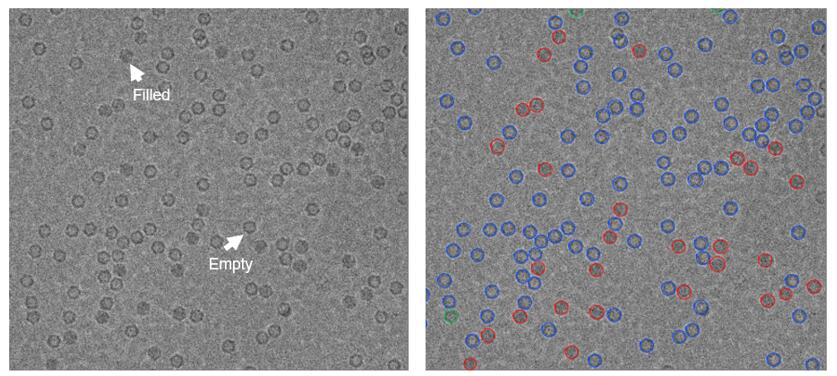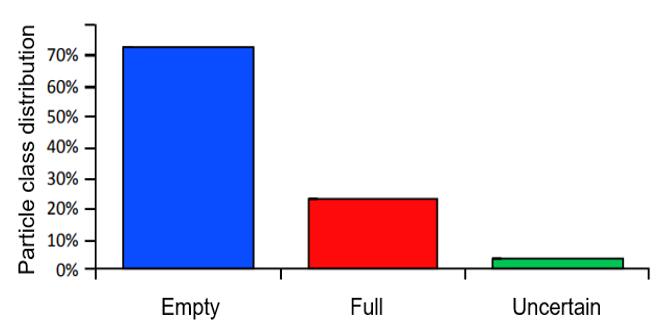- You are here: Home
- Services
- Histology Services
- Transmission Electron Microscopy
- Cryogenic Transmission Electron Microscopy (cryoTEM)
Services
-
Cell Services
- Cell Line Authentication
- Cell Surface Marker Validation Service
-
Cell Line Testing and Assays
- Toxicology Assay
- Drug-Resistant Cell Models
- Cell Viability Assays
- Cell Proliferation Assays
- Cell Migration Assays
- Soft Agar Colony Formation Assay Service
- SRB Assay
- Cell Apoptosis Assays
- Cell Cycle Assays
- Cell Angiogenesis Assays
- DNA/RNA Extraction
- Custom Cell & Tissue Lysate Service
- Cellular Phosphorylation Assays
- Stability Testing
- Sterility Testing
- Endotoxin Detection and Removal
- Phagocytosis Assays
- Cell-Based Screening and Profiling Services
- 3D-Based Services
- Custom Cell Services
- Cell-based LNP Evaluation
-
Stem Cell Research
- iPSC Generation
- iPSC Characterization
-
iPSC Differentiation
- Neural Stem Cells Differentiation Service from iPSC
- Astrocyte Differentiation Service from iPSC
- Retinal Pigment Epithelium (RPE) Differentiation Service from iPSC
- Cardiomyocyte Differentiation Service from iPSC
- T Cell, NK Cell Differentiation Service from iPSC
- Hepatocyte Differentiation Service from iPSC
- Beta Cell Differentiation Service from iPSC
- Brain Organoid Differentiation Service from iPSC
- Cardiac Organoid Differentiation Service from iPSC
- Kidney Organoid Differentiation Service from iPSC
- GABAnergic Neuron Differentiation Service from iPSC
- Undifferentiated iPSC Detection
- iPSC Gene Editing
- iPSC Expanding Service
- MSC Services
- Stem Cell Assay Development and Screening
- Cell Immortalization
-
ISH/FISH Services
- In Situ Hybridization (ISH) & RNAscope Service
- Fluorescent In Situ Hybridization
- FISH Probe Design, Synthesis and Testing Service
-
FISH Applications
- Multicolor FISH (M-FISH) Analysis
- Chromosome Analysis of ES and iPS Cells
- RNA FISH in Plant Service
- Mouse Model and PDX Analysis (FISH)
- Cell Transplantation Analysis (FISH)
- In Situ Detection of CAR-T Cells & Oncolytic Viruses
- CAR-T/CAR-NK Target Assessment Service (ISH)
- ImmunoFISH Analysis (FISH+IHC)
- Splice Variant Analysis (FISH)
- Telomere Length Analysis (Q-FISH)
- Telomere Length Analysis (qPCR assay)
- FISH Analysis of Microorganisms
- Neoplasms FISH Analysis
- CARD-FISH for Environmental Microorganisms (FISH)
- FISH Quality Control Services
- QuantiGene Plex Assay
- Circulating Tumor Cell (CTC) FISH
- mtRNA Analysis (FISH)
- In Situ Detection of Chemokines/Cytokines
- In Situ Detection of Virus
- Transgene Mapping (FISH)
- Transgene Mapping (Locus Amplification & Sequencing)
- Stable Cell Line Genetic Stability Testing
- Genetic Stability Testing (Locus Amplification & Sequencing + ddPCR)
- Clonality Analysis Service (FISH)
- Karyotyping (G-banded) Service
- Animal Chromosome Analysis (G-banded) Service
- I-FISH Service
- AAV Biodistribution Analysis (RNA ISH)
- Molecular Karyotyping (aCGH)
- Droplet Digital PCR (ddPCR) Service
- Digital ISH Image Quantification and Statistical Analysis
- SCE (Sister Chromatid Exchange) Analysis
- Biosample Services
- Histology Services
- Exosome Research Services
- In Vitro DMPK Services
-
In Vivo DMPK Services
- Pharmacokinetic and Toxicokinetic
- PK/PD Biomarker Analysis
- Bioavailability and Bioequivalence
- Bioanalytical Package
- Metabolite Profiling and Identification
- In Vivo Toxicity Study
- Mass Balance, Excretion and Expired Air Collection
- Administration Routes and Biofluid Sampling
- Quantitative Tissue Distribution
- Target Tissue Exposure
- In Vivo Blood-Brain-Barrier Assay
- Drug Toxicity Services
Cryogenic Transmission Electron Microscopy (cryoTEM)
Cryogenic Transmission Electron Microscopy (CryoTEM), commonly known as cryoTEM, is a form of cryogenic electron microscopy, more specifically a type of transmission electron microscopy (TEM) where the sample is studied at cryogenic temperatures (generally liquid-nitrogen temperatures). CryoTEM is gaining popularity in structural biology. The utility of cryoTEM stems from the fact that it allows the observation of specimens that have not been stained or fixed in any way, showing them in their native environment.
In recent years, cryoTEM has evolved into an essential tool for the characterization of colloidal drug delivery systems. The application of this technique is not only confined to size analysis, but also the shape and internal structure of nanoparticulate carrier systems as well as the overall colloidal composition of corresponding dispersions. For example, cryoTEM can provide the data of the ratio of filled and empty capsids, which is a critical quality attribute requirement for any AAV vector manufacturing process. Cryo-TEM involves rapid freezing of AAV suspensions on a perforated sample carrier and visualizing the sample using a cryogenic transmission electron microscope (cryo-TEM), which shows the projections of AAV particles. In other words, the inside of AAVs can be seen. This enables us to determine whether an AAV particle is genome-filled or empty (Figure 1). Genome-filled capsids are characterized by being dark throughout. Empty capsids have dark boundaries at particle edges but are light in the center. Other sample properties like particle uniformity, integrity and clumping are also readily discerned.
 Figure 1 - cryoTEM images of adeno-associated virus (AAV) displaying the filled and empty particles (left). The detected and classified particles are overlaid with red/blue/green circles (right) and correspond to filled, empty, and intermediate particles, respectively.
Figure 1 - cryoTEM images of adeno-associated virus (AAV) displaying the filled and empty particles (left). The detected and classified particles are overlaid with red/blue/green circles (right) and correspond to filled, empty, and intermediate particles, respectively.
 Figure 2 - A representative histogram displaying the percentages of filled, empty and intermediate AAV particles, as determined from semi-automated detection. Particle classification is based on internal density analysis of each particle.
Figure 2 - A representative histogram displaying the percentages of filled, empty and intermediate AAV particles, as determined from semi-automated detection. Particle classification is based on internal density analysis of each particle.
The following useful information of the viral vectors can be monitored using cryo-TEM:
- The ratio of filled and empty AAV capsids
- The internal density of adenoviral vectors
- Lentiviral particles exhibiting a visible core
- Liposome-like particles
- Others depending on the phase of development of sample production
Features of Creative Bioarray's Cryogenic Transmission Electron Microscopy (cryoTEM) Service:
- Accurate - When the analysis is finished, we provide you with the TEM images and a detailed report
- Value - We focus on the quality of our service and all supported by competitive pricing
- Efficiency - We are able to provide the fastest turnaround time of any supplier in the industry
Quotation and ordering
Our customer service representatives are available 24hr a day! We thank you for choosing Creative Bioarray at your preferred Cryogenic Transmission Electron Microscopy (cryoTEM) Services.
Explore Other Options
For research use only. Not for any other purpose.

